Big Battle of the Brit Two-Ways: Spendor Audio Classic 3/1 Vs Graham Audio/Chartwell LS6
by David Neice
Spendor Audio Classic 3/1: MSRP $5600 (Canadian). This speaker’s dedicated stand (not reviewed) retails for $1625 Canadian per pair
Graham Audio/Chartwell LS6: MSRP $5600 (approximate) Canadian, Factory Stands: $1500 (USD), Artesania Decoupling Footers: $750 (USD)
Verdict:
There is a sweet spot in two-way stand mounts, my favourite speaker design. That sweet spot embraces neither too large an enclosure nor too small. This review offers a comparison between two recognized leaders in the never ending battle for our hearts as the current favourite two-way stand mount.
The Spendor Classic 3/1 with the right amplifier (read on) offers an unbelievably smooth and velvety midrange, which is something of a Spendor fetish. In contrast, the Graham Audio LS6 with the right amplifier has a midrange impact that can only be characterized as offering uncanny immediacy, on a level rivaling electrostatic and planar speakers.
I found that the Chartwell LS6 loaded my room in a delightful way, but the lower register on the Spendor was more extended and detailed. Soundstaging for both were excellent. The highs for both designs are pretty much equal, but the transient immediacy of the LS6 gives it a slight listener’s edge that is hard to dispute.
It has been noted by others that the Spendor 3/1 and the Graham LS6 are both touched by the design genius of the Hughes family. The father, Spencer, was responsible for the original Spendor classic designs such as the (3-way) BC1, while his son, Derek, is responsible for the Spendor SP1 as well as all the new Graham Audio designs. In this sense these two speaker designs (and designers) are almost book matched.
There must be a winner in any such battle, but the differences here will really come down to user preferences. If you are weary of the fatigue induced by ‘audiophile designs’ where the emphasis is on extreme resolution, then the Spendor when matched with the right amplifier would be the first choice for a more relaxed listening experience. On the other hand, if you are looking for more immediacy and inner detail in the midrange – with a bit less bass extension – then the LS6 would be preferred.
Overall we declare the winner, by a small margin, to be the Graham Audio LS6. But realistically these are simply the best two-way dynamic driver standmount speakers that I have ever auditioned, and either should delight any owner.
Introduction
The British seem to own the two-way standmount design territory. It has been this way for decades. I think it has something to do with the size of the typical UK parlour found in the home, which is much smaller than the typical North American version.
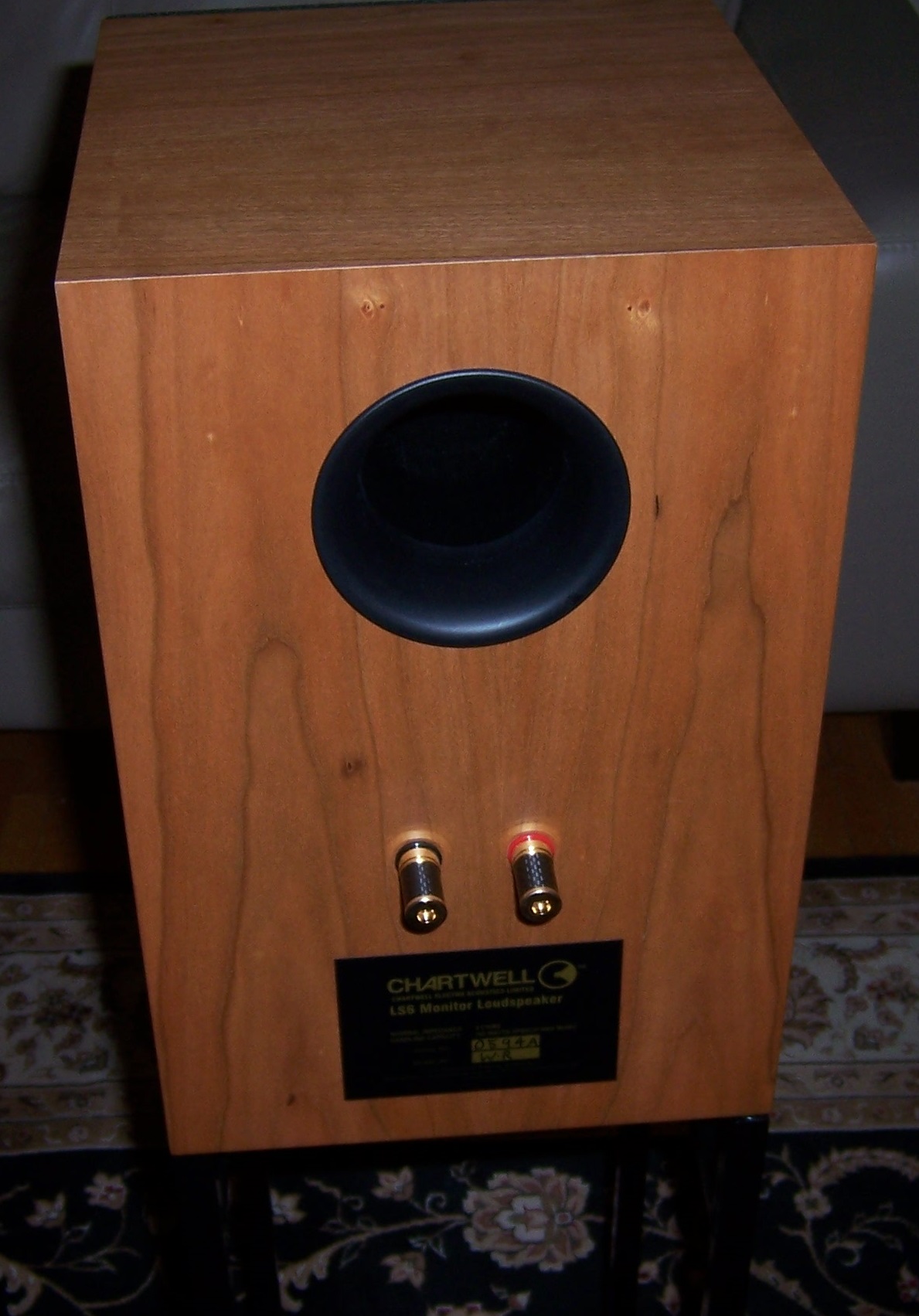 Much of the R&D work can also be traced back to the original BBC Radio projects, where great emphasis was placed on ‘natural voicing’ so that announcers would sound as real as life when reproduced. By embracing specified standards, e.g. the LS3/5 licensed design, several of Britain’s speaker companies have run with this ball for decades, competing head to head for consumer and industry approval.
Much of the R&D work can also be traced back to the original BBC Radio projects, where great emphasis was placed on ‘natural voicing’ so that announcers would sound as real as life when reproduced. By embracing specified standards, e.g. the LS3/5 licensed design, several of Britain’s speaker companies have run with this ball for decades, competing head to head for consumer and industry approval.
Thus, the perfecting of classic two-way standmount speaker designs has become an object of prestige among dozens of UK manufacturers – Harbeth, ATC, KEF, Proac, Wharfedale, Celestion, and Bowers & Wilkins to name just a few. While each design may have unique objectives, in my humble view the size of the cabinet is the key to a successful two-way standmount design.
The currently popular retro movement in audio, such as is found in the newest Mission 770, yields a cabinet that is a bit too large for my visual tastes. In contrast the various iterations of the LS3/5a and their clones are a bit too small. The trick in a standmount two-way is to find the right balance in a not too large enclosure (about one cubic foot), which usually results in a reflex design with a large port.
Besides the above listed manufacturers there are products that match this template from some of the more boutique UK companies, such as Spendor and Graham Audio. So we are pitting two outstanding contenders that fit this template into a pitched battle for our ears; the Spendor Classic 3/1 and the newer Graham Audio LS6. Let’s get to it.
Spendor Classic 3/1
I got fired up during the Toronto Audio Fest in October 2023 and ordered a pair of Spendor Classic 3/1 speakers from Brooklyn Audio In Nova Scotia. According to some UK press commentary these occupy a special niche in the Spendor Classic range.
It has been a very long while since a new Spendor speaker graced my listening room (the last pair were S3/5 R2s) and I was curious to see how their Classic range was holding up. The best option, I thought, was to buy a pair and see.
The Classic 3/1 is a ‘plain jane’ design with a 180 mm proprietary bass/mid driver and a Spendor-designed and built 22 mm soft dome tweeter that is also used in other Spendor models. As this is a BBC-derived lossy cabinet design, the crossover frequency is fairly high at 3700 Hz.
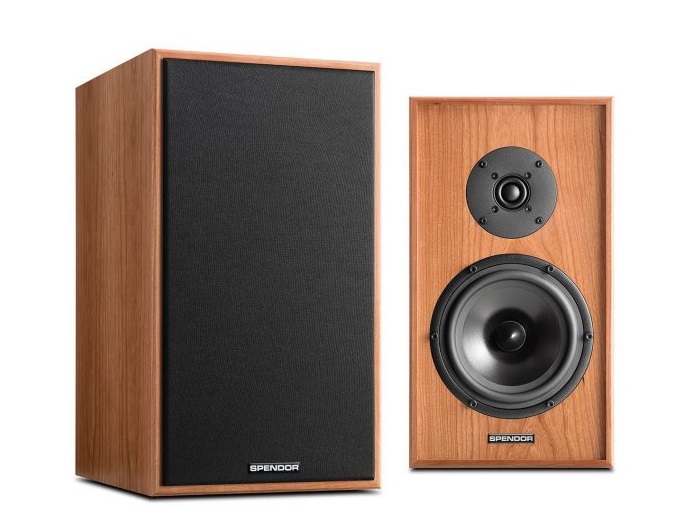 The cabinet is a bit larger (16 X 9 X 11″) than the LS6, and is beautifully veneered (in my case in cherry). While the cabinets appear plain, they also look ‘retro’ or vintage, which is fitting as they are in the Classic range. A flared tuning port sports the rear panel and high quality binding posts are also found with bi-wire capabilities. For review purposes I did not bi-wire and I used the factory jumpers supplied.
The cabinet is a bit larger (16 X 9 X 11″) than the LS6, and is beautifully veneered (in my case in cherry). While the cabinets appear plain, they also look ‘retro’ or vintage, which is fitting as they are in the Classic range. A flared tuning port sports the rear panel and high quality binding posts are also found with bi-wire capabilities. For review purposes I did not bi-wire and I used the factory jumpers supplied.
The speakers have magnetic grills, and these are meant to be used when listening as recommended. The grill fit is quite tight and the cabinets have a recessed front edge that the grills nest into.
The sensitivity of the Classic 3/1 speakers is 88 db, and the nominal impedance is 8 ohms. The frequency range is stated as 40 – 25000 Hz, and the recommended amplifier power is 25 – 150 watts.
The Graham Audio – Chartwell LS6
Matt Thomas at Hearken Audio in Kitchener/Waterloo is a Graham Audio dealer and he generously offered me the use of a pair of the Chartwell LS6 speakers for this review, as well as their factory-fitted stands (footnote 1) . The package came with custom decoupling footers by Artesania, which Matt recommends and I followed his advice.
The LS6 is also not a complicated design, but like all the Graham Audio speakers it relies on a BBC based lossy cabinet construction that is now viewed by many speaker designers as old-fashioned. Other than that it is a conventional two-way passive speaker with a 165 mm (6 inch) coated-polypropylene-diaphragm bass/mid driver, and a 19 mm soft-dome tweeter.
The tweeter is actually the same unit as the one employed in the Graham/Chartwell LS3/5, and both drivers are custom-designed units from Norwegian specialist company SEAS. A passive crossover integrates the drivers at 4kHz and includes some elements dedicated to ‘voicing’ this monitor though passive equalization (see below).
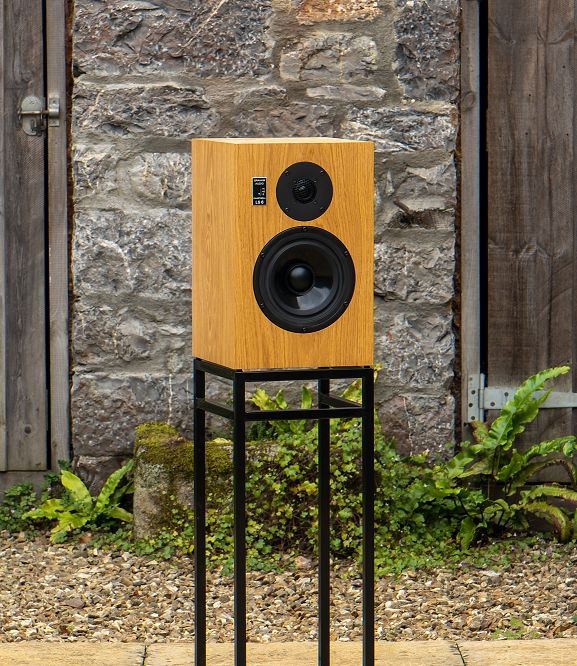 The LS6 has a smaller cabinet than the Spendor 3/1 and is 36cm high, 24cm wide and 26cm deep (14.2 x 9.5 x 10.2″). The cabinet is finished in a tastefully restrained wood veneer and incorporates a large, generously flared reflex port directly behind the tweeter on its rear panel. Lower on the rear panel are a pair of beautiful (single-wire) binding-post terminals and an informational badge label.
The LS6 has a smaller cabinet than the Spendor 3/1 and is 36cm high, 24cm wide and 26cm deep (14.2 x 9.5 x 10.2″). The cabinet is finished in a tastefully restrained wood veneer and incorporates a large, generously flared reflex port directly behind the tweeter on its rear panel. Lower on the rear panel are a pair of beautiful (single-wire) binding-post terminals and an informational badge label.
Around on the front panel, alongside the tweeter, is a switch which provides an optional +1dB or +2dB tweeter level adjustment. Magnetically secured fabric grilles are supplied, and the user manual recommends that they be fitted for listening, so I kept them on during the review.
Indications are that the design brief for the LS6 was to render the human voice as accurately as possible, but with more bass extension and greater dynamics than the LS3/5a. I think that’s a pretty good description of the LS6’s personality (Footnote 2). The LS6’s have a larger cabinet, a larger mid-bass driver and are way more efficient than the LS3/5a, and the laws of physics apply here. Other specifications are listed below.
Amps & Synergies
Initially when I received the Spendors by transport, I set them up using a Unison ‘Simply Italy’ amplifier, a small 13 watt single-ended EL34 tube design that I much love. This was a mistake, and first impressions really count. Some would say that the Unison is too weak to drive these speakers but I normally listen at moderate levels, with about 75dB as a ceiling.
The result of the Spendor/Unison pairing was that initially I found the Spendors to be somewhat soft and underwhelming and it took about a hundred hours of use to really break them in.
When the Grahams arrived they were already broken in and I also set them up initially with the Unison amplfier. They responded much better to the Unison than the Spendors did, and a level of inner detail was immediately apparent that had escaped notice with the Spendors.
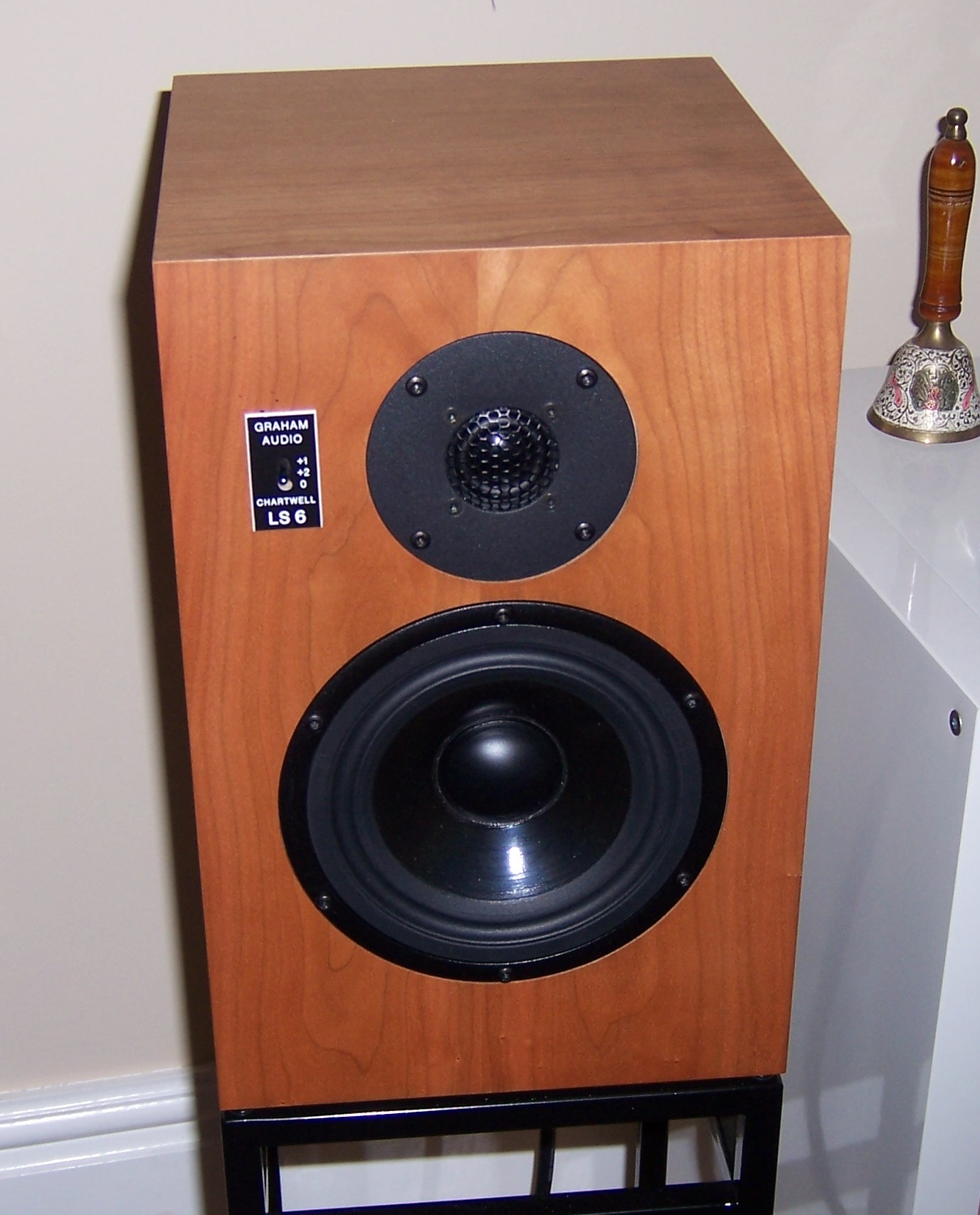 After about a week of LS6 use, I switched amplifiers and hooked up a Naim Nait XS to the Spendors. Boy oh boy, the difference was not subtle. The Naim grabbed the Spendors by the throat and really ‘woke them up’. I was a bit surprised at the extent of the transformation, but also pleased. The midrange immediacy which was formerly lacking in the Spendors was suddenly apparent, the bass definition was startling and the soundstage gained width and depth. As if by magic, the Spendors were back in the serious comparison game.
After about a week of LS6 use, I switched amplifiers and hooked up a Naim Nait XS to the Spendors. Boy oh boy, the difference was not subtle. The Naim grabbed the Spendors by the throat and really ‘woke them up’. I was a bit surprised at the extent of the transformation, but also pleased. The midrange immediacy which was formerly lacking in the Spendors was suddenly apparent, the bass definition was startling and the soundstage gained width and depth. As if by magic, the Spendors were back in the serious comparison game.
This is all not too surprising as the pairing of Spendor speakers and Naim amplification has a long history of being a really successful marriage. But I was caught a bit off-guard and this demonstrates once again how vital speaker and amplifier matching is to getting splendid audiophile results.
I then thought (in anticipation) that when I would couple the Naim with the Graham Audio LS6s, I would be in heaven. But it was not to be. As it turned out, the Naim/Graham combo was a tough listen. The very alive sound that the Spendors were issuing was replaced by a sense of midrange peakiness that completely flabbergasted me. The Naim was ‘too much’ for the Grahams and to optimize the sound issuing from the Grahams I had to quickly return to driving them with the Unison tube amp.
Now this little life lesson is a reminder to me that we are always listening to a speaker plus an associated amplifier combination. Thus it is not fair to really say that I am doing a comparison of a Spendor speaker and a Graham Audio speaker, but rather that I am comparing a Spendor/Naim combo with a Graham/Unison combo. Only in this way can I be said to be reviewing the best systems on offer.
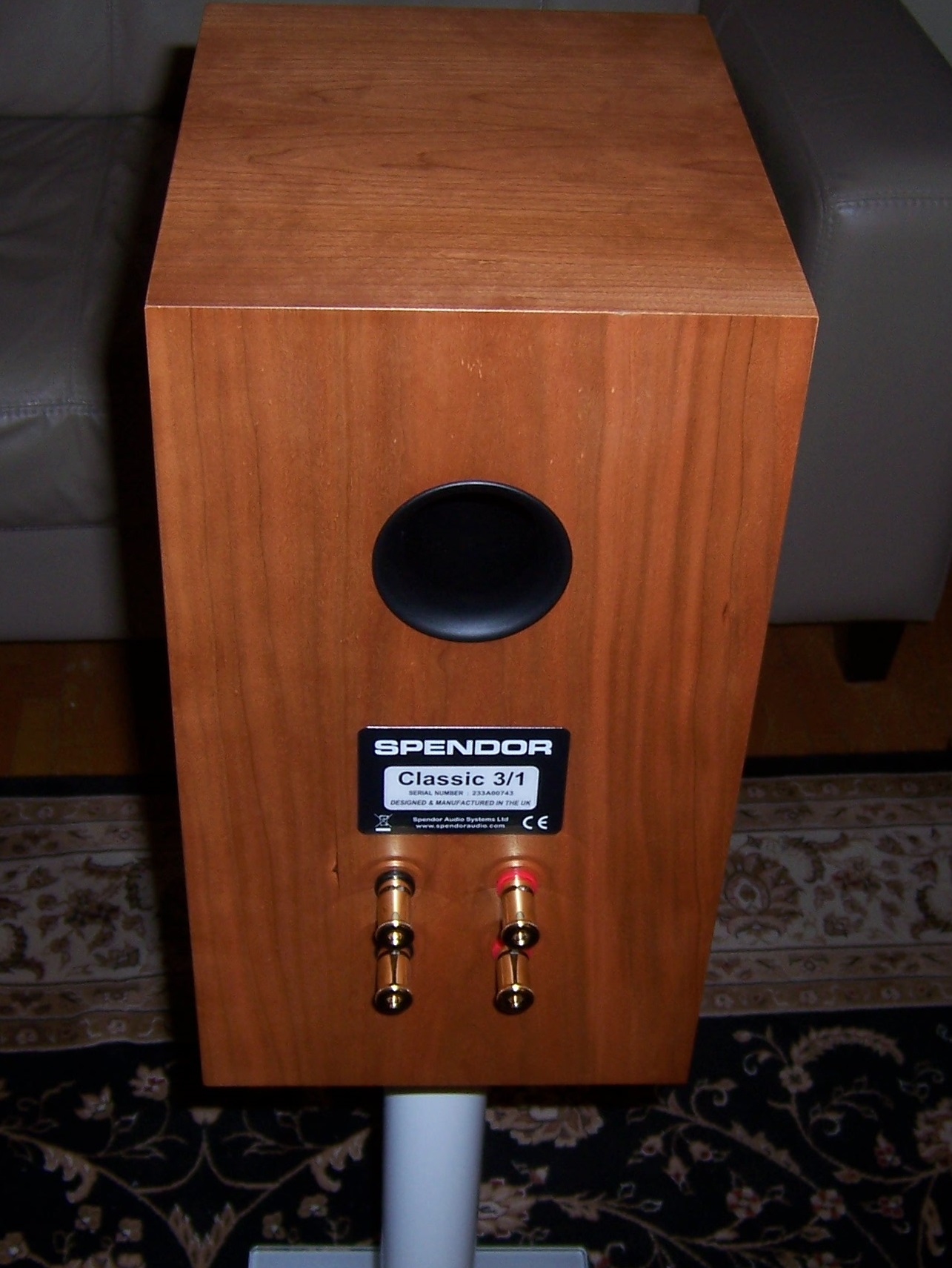 This may seem obvious to many but is central to the audiophile experience. There are those, including Alan Shaw of Harbeth fame, who contend that all amplifiers (responsibly designed) sound the same, but the synergies between speakers and different amplifiers are quite variable. When you put a voltage load on a speaker and when a sophisticated crossover comes into play as well as the voicing of the speaker, some surprising things can happen.
This may seem obvious to many but is central to the audiophile experience. There are those, including Alan Shaw of Harbeth fame, who contend that all amplifiers (responsibly designed) sound the same, but the synergies between speakers and different amplifiers are quite variable. When you put a voltage load on a speaker and when a sophisticated crossover comes into play as well as the voicing of the speaker, some surprising things can happen.
As far as the other ancillary gear is concerned, I listened mainly to CDs via a Cambridge Audio 640c player, and to vinyl on a Gold Note Valore Special edition turntable, with a HANA EL cartridge fed through a Parasound phono pre-amplifier. Speaker cables were Audio Sensibility Impact cables made with OCC copper.
Listening Comparisons
A large supply of material was played in over two weeks of careful listening and this section of the review will only cover a faction of what was auditioned. Within reason, I tried to ensure that most selections were played on both speakers under review, but this was not always achieved.
The combinations of the Spendor/Naim and Graham/Unison were actually quite close in character to each other. While there were still some differences between the combos, they were more restrained and required very close listening.
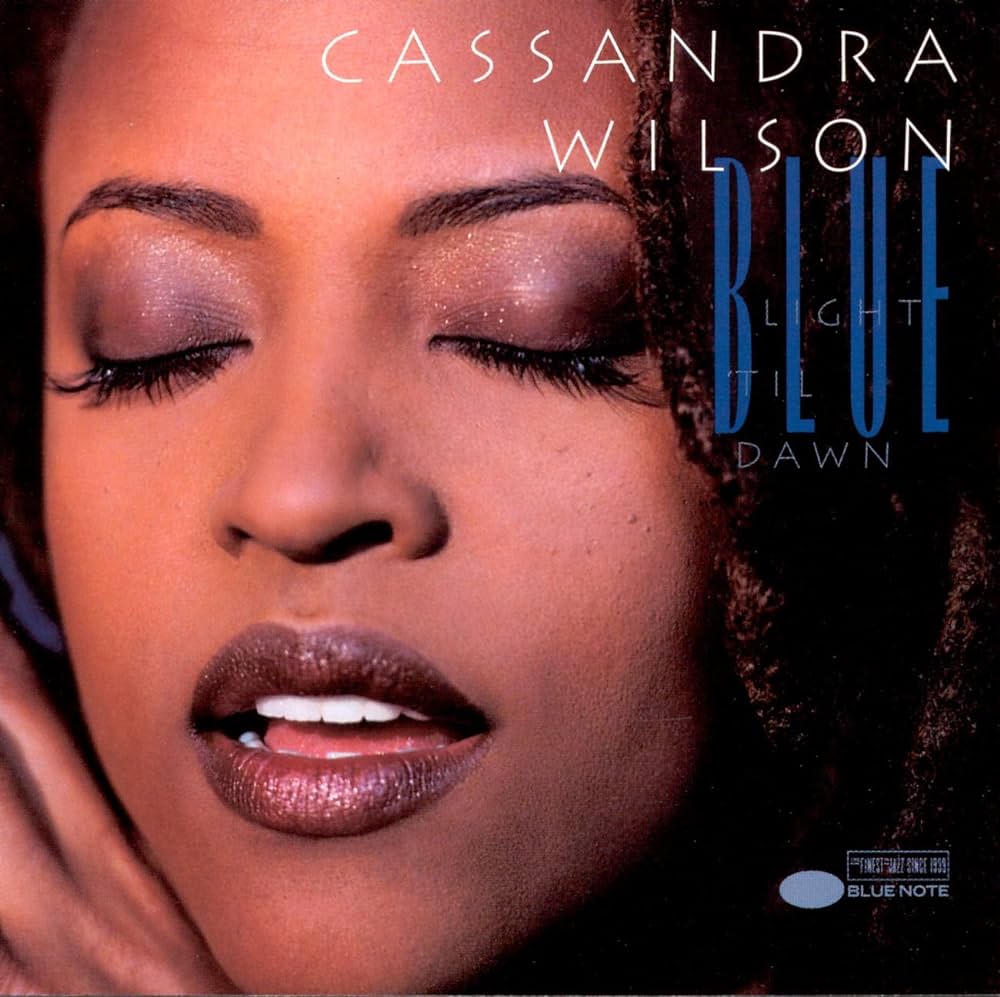 First up is Cassandra Wilson’s audiophile-caliber CD ‘Blue Light Till Dawn’. I use this mix of selections to test a speaker’s varied responses as the tracks contain layers of unusual instruments and unique sounds all wrapped in a jazz-inflected format. Right out of the gate the Spendor/Naim combo showed an unusual aptitude to render life-like the utterances and tonal shadings of the various instrumental sounds emanating from the tracks.
First up is Cassandra Wilson’s audiophile-caliber CD ‘Blue Light Till Dawn’. I use this mix of selections to test a speaker’s varied responses as the tracks contain layers of unusual instruments and unique sounds all wrapped in a jazz-inflected format. Right out of the gate the Spendor/Naim combo showed an unusual aptitude to render life-like the utterances and tonal shadings of the various instrumental sounds emanating from the tracks.
Not far behind, the Graham/Unison combo seemed to ‘get the vocals right’ and although the bass extension was not as quick or deep as the Spendor/Naim combo, the fetching mid-bass resolution of the Graham/Unison combo left little to be desired.
I auditioned Van Morrison’s longest recorded track, ‘In The Summertime in England’, found on the CD ‘Common One’. I love this track as it epitomizes Van’s mid-period voice and jazzy vocal shadings. The Spendor/Naim pairing brought an energy and soundstage width to the track that surprised me, and the lower registers were rendered rich and were full of detail and bass precision.
 Through the Graham/Unison combo, the mids were delicate but also were shaped with lots of natural verve. The strength of the Grahams is in their immediacy, which reminded me of electrostatic designs. Soundstaging with the Graham/Unison combo was equal to the Spendors, and the bass lines, while a bit lighter, were eminently tuneful and enhanced by some reinforced mid-bass harmonics. On balance I preferred the Graham/Unison rendition of this track, although the competition was very close.
Through the Graham/Unison combo, the mids were delicate but also were shaped with lots of natural verve. The strength of the Grahams is in their immediacy, which reminded me of electrostatic designs. Soundstaging with the Graham/Unison combo was equal to the Spendors, and the bass lines, while a bit lighter, were eminently tuneful and enhanced by some reinforced mid-bass harmonics. On balance I preferred the Graham/Unison rendition of this track, although the competition was very close.
Turning to a vinyl copy of Andreas Wollenwieder’s album ‘White Winds’, I was struck by the delicacy of the harp and bell notes on the Graham/Unison combo. Again, this album contains many unusual instruments playing in the background, and the Grahams did a fine job of resolving these unusual voices as well as the female choral groups that embellish some tracks.
The somewhat deeper bass response of the Spendor/Naim combo did enhance the soundstage and gave a greater sense of depth to the harp performances. I felt the Spendor/Naim combo also did highlight the choral groups and offered more body to their performances, however this was a somewhat minor but illuminating effect.
 Having seen the effects that the better bass of the Spendor/Naim combo had on my reactions, I then checked out Curtis Mayfield’s film masterpiece ‘Superfly’, and in particular the track ‘Pusher Man’. This is a polyrhythmic track of enormous complexity where conga drums compete for the attention of the listener, and they absolutely demand the right snap to their whack. The resolution of mid-bass is really stretched to the limits with this track.
Having seen the effects that the better bass of the Spendor/Naim combo had on my reactions, I then checked out Curtis Mayfield’s film masterpiece ‘Superfly’, and in particular the track ‘Pusher Man’. This is a polyrhythmic track of enormous complexity where conga drums compete for the attention of the listener, and they absolutely demand the right snap to their whack. The resolution of mid-bass is really stretched to the limits with this track.
I found the Spendor/Naim combo did a better job of voicing the smashing congas – but the Graham/Unison combo gave a superior performance to the vocal track. Other orchestral instruments were also rendered with greater delicacy by the Graham/Unison combo, so overall I would rate this particular test as a dead heat.
 The final CD I will comment on is Alison Brown’s tour de force ‘Stolen Moments’. Brown is a banjo virtuoso who can play bluegrass at blinding speed, and has gathered a group of like-minded performers bashing away on instruments such as mandolin and piano. The tracks are full of verve and elan, and many are played at breathtakingly rapid tempo. The ability of any speaker to follow the musical lines of each instrument are tested in the extreme by the contents of this CD.
The final CD I will comment on is Alison Brown’s tour de force ‘Stolen Moments’. Brown is a banjo virtuoso who can play bluegrass at blinding speed, and has gathered a group of like-minded performers bashing away on instruments such as mandolin and piano. The tracks are full of verve and elan, and many are played at breathtakingly rapid tempo. The ability of any speaker to follow the musical lines of each instrument are tested in the extreme by the contents of this CD.
The immediacy of the Graham/Unison pairing was startlingly evident in these tracks, and the vocal resolution was exemplary. The Spendor/Naim combo was a bit slower sounding, but had greater reach in the bass region, and this added a notable boost to the rhythmic content. Once again, the results were really a tie and the preference for one over the other combo would very much depend on the listener’s biases. I tended to favour overall the Graham/Unison soundscape in this test.
Unfortunately the length of this review prevents me from making extensive comparisons to other speaker samples I have heard. I do want to say though that a pair of J. M. Reynaud Bliss Jubilees that I owned/reviewed a few years ago were more capable at transmitting the ’emotional content’ of music than either of these two British designs. However, both the Spendor/Naim combo and the Graham/Unison combo are all about the midrange and at that task these two BBC derived lossy cabinets are simply superb. Which they’d better be, at today’s prices! I actually find these speakers to be pushing the upward boundary of value acceptability. In particular the factory stands strike me as being very expensive for what is involved. It is true that they’re a perfect fit, but money does not grow on trees and ‘audio inflation’ is real and galloping along as if there were no tomorrow. So there, I’ve had my rant.
Conclusion
If you are in the market for a standmounted two-way loudspeaker with an unimpeachable BBC pedigree, and with a particular aptitude for conveying the midrange glory of the human voice and other instruments, please do check out both the Spendor Classic 3/1 and the Graham Audio/Chartwell LS6. Both these speakers are a clear victory for the BBC school of thin-walled cabinet speaker design.
These are reference level speakers so please note how important matching with an appropriate amplifier will be, as noted in my experiences above. Suggestions from your retailer would likely be helpful here.
There must be a winner in any battle and we declare now that winner to be, by a very slight margin, the Graham Audio LS6 (Footnote 3). The LS6 when paired with the right amplifier offers a slight edge, but both speakers are likely the best two-way dynamic driver standmount speakers that I have ever auditioned. (Footnote 4)
Footnote 1. The Chartwell name is used as it is a division of Graham Audio and refers to the legendary company from the 1970s that licensed BBC speaker designs.
Footnote 2. In the 1970s Rogers made an LS6 model which was a two-way, but was larger than the auditioned Chartwell.
Footnote 3. Another caveat is that the Graham was auditioned with its native stands, as well as the aftermarket decoupling feet.
Footnote 4. By the way, the Chartwell LS6 also comes in a floorstanding version, with a little more bass extension and impact. Inquire with the dealer, if interested!
Thanks to Jody at Brooklyn Audio for sending me the Spendor 3/1s, and to Matt Thomas of Hearken Audio for lending us the Graham Audio LS6s.
Spendor Classic 3/1 Specifications
Type: 2-way bass reflex standmount
Drive Units: LF 7.08” (180mm), HF 0.87” (22mm)
Response: 40Hz – 25kHz
Impedance: 8 Ohms
Amplifier: 25 – 150watts
Sensitivity: 88dB
Crossover: 3.7kHz
Dimensions: 16” x 9” x 11” (395 x 220 x 285mm)
Weight: 22lbs (10kg)
Graham Audio – Chartwell LS6 Specifications
System: 2-Way, reflex loading
Enclosure: Thin wall damped construction
Finish: Real wood veneer
Dimensions (w/h/d): 24cm by 37cm by 26cm
Weight: 9.5kg
Frequency response: 45Hz to 20kHz, ±2dB
Nominal impedance: 8Ω
Sensitivity: 87dB SPL (2.83V, 1m)
Maximum output: Over 100dB for a pair at 2m
Bass/midrange: 165mm polypropylene
Tweeter: 19mm dome tweeter
Recommended power: 50 – 150 watts unclipped programme


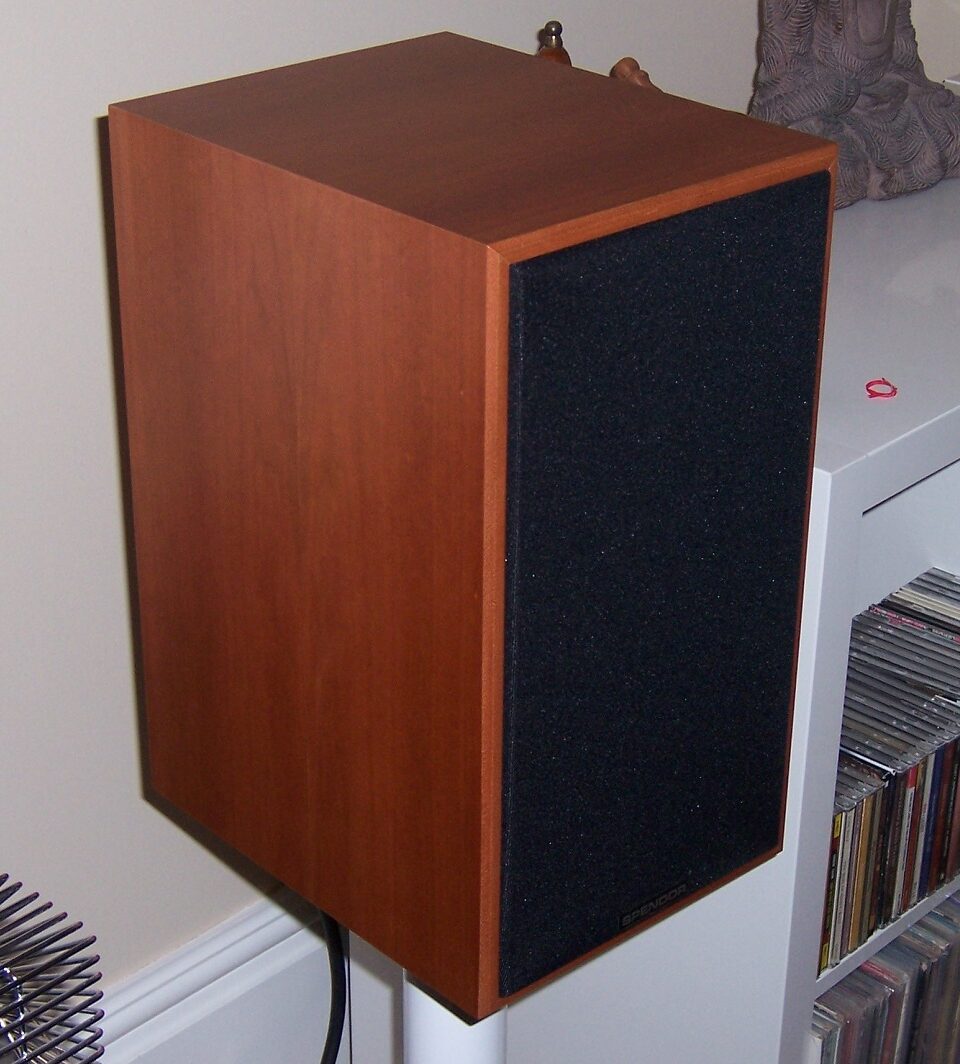
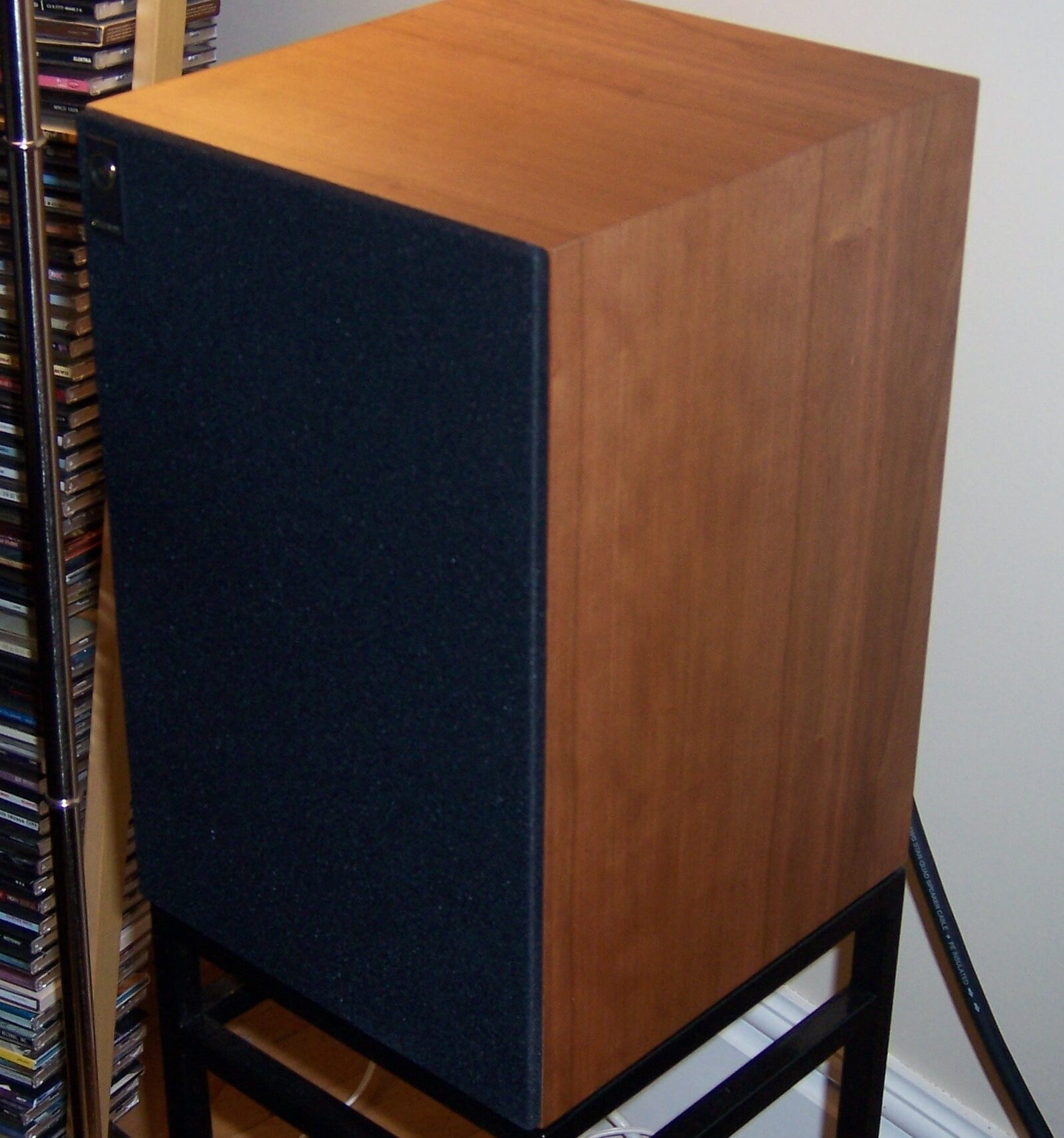


Great review as always. Thanks for the kind words about Graham Loudspeakers.
Thanks for the review David.
I fully agree with your comment on speaker/amplifier synergy.
Your comment about the JMR Bilss Jubilee is spot on. A couple of years ago, I purchased a pair from a local CAM member, based in part on your earlier review; and a lengthy audition that the owner kindly tolerated.
There are so many good stand-mount speakers to choose from these days.
cheers
Santo
Thanks for a thoughtful review. One conundrum: the Spendor is spec’ed at half the minimum amp power than the Graham, but you found the Graham worked well with a 13-watt amp while you found the Spendor really needed more than that little amp. What gives?
Hi Charles,
I know – it is a conundrum. Since I did the review I have had reason to dial in the Spendors more to my liking. Besides the amplifier change to Naim, I also blocked the ports, which in my room, made the bass tighter even if there was less of it. Thirdly, I found the Spendors needed lots of toe-in and that they are a one position speaker. Provided you are in the sweet spot they have a marvellous mid-range but the sweet spot is quite narrow and small changes in your head position can affect the sound-scape. Still, the Grahams have a slight edge overall, except in bass extension. I also tried the Spendors with a Luxman SQN100 tube amp, an EL84 design, and while this was better than the Simply Italy, it was not as good as the Naim amplifier. So the mystery continues.
Cheers,
David Neice
Great review, thanks David.
I have owned the Spendor Classic 3/1 for some time, and agree that there’s a seductive midrange, with a surprising heft to the bottom end. The top end is polite, albeit still detailed. While I haven’t heard the standard Graham LS6, I have listened to the Graham LS6 10-year anniversary edition in the same room at home, with the same set up. Both with a Rega Aethos and an Arcam SA30.
The Rega sounds best, having more rhythmic drive and inner soundstage detail. Alongside you mentioning Naim as a good partner for the Spendor, I would suggest Rega fits that brief too.
My thoughts on the LS6 (anniversary edition) match yours to an extent – quite an immediate, engaging midrange. A bit more toe-tapping. Bass does indeed feel lighter than the Spendor, but the front port makes it easier for room placement. My issue was with the top end though. I personally found it quite ‘plasticky’ and artificial sounding, at least in comparison to the Spendor, which sounds more cohesive and consistent in character, from top to bottom. The LS6 are also far from bright sounding, but I didn’t found them particular kind with brighter or poorly recorded tracks, again, down to the character of the tweeter I think. It’s not actually a soft fabric dome, but appears to be thin plastic (or Mylar?), giving it a slightly brittle character.
I also found the build quality and appearance of the Spendor superior, not that that’s a major consideration in its own right. The price though…£4,020 in the UK for the LS6 anniversary is unacceptably high in my view, although I appreciate the standard model is quite a lot cheaper; less than the Spendor.
Overall, price aside, I think I would be happy with both, but I find the Spendor easier to live with on the whole, even if on certain tracks I miss certain traits of the Grahams.
Note to Dave V,
I was quite gratified by your notations and to see that we had similar perceptions of these two classic speakers. When I do a review I am always a little nervous that I am being unfair to this or that component. Reviewing is such a lonely occupation. Thank you for posting that note.
Cheers,
David Neice
Thank you for this review! I had been looking for a comparison between the Spendors and Chartwells. Perfectly done. Now that poor Andy Singer has passed away, there’s no place in the NYC area to try out the Chatwells again. The biggest problem is the paucity of brick-and-mortar audio shops around anymore. One concern I have is the point that the head position is in a “vice-grip” to get good results from the Spendors. That’s too bad. Joe
Hi Joe,
Thanks for the comments. I recently bought a pair of Jean Marie Reynaud Bliss Silvers and they confirm my reaction to the Spendors. They are very sensitive to your head position. If you have a listening seat that is stable and preferred then you can find the sweet spot and benefit from it. But if you ‘move around’ then the image specificity is lost and you will ‘head hint’ for the sweet spot. In that regard the Chartwells are still better but not as good as the new JMRs I have acquired.
Cheers,
David Neice